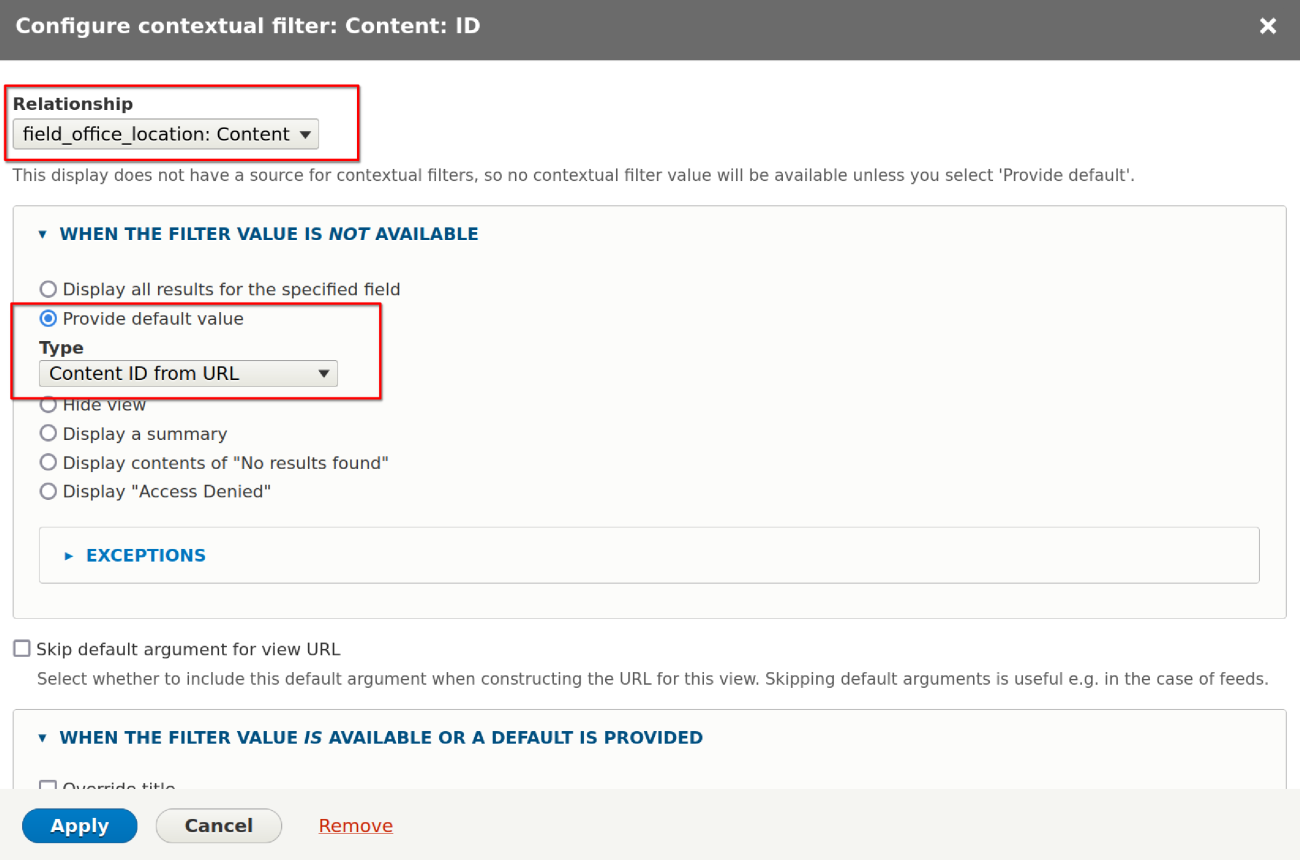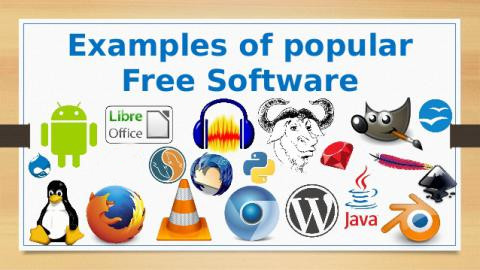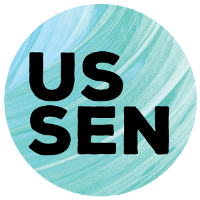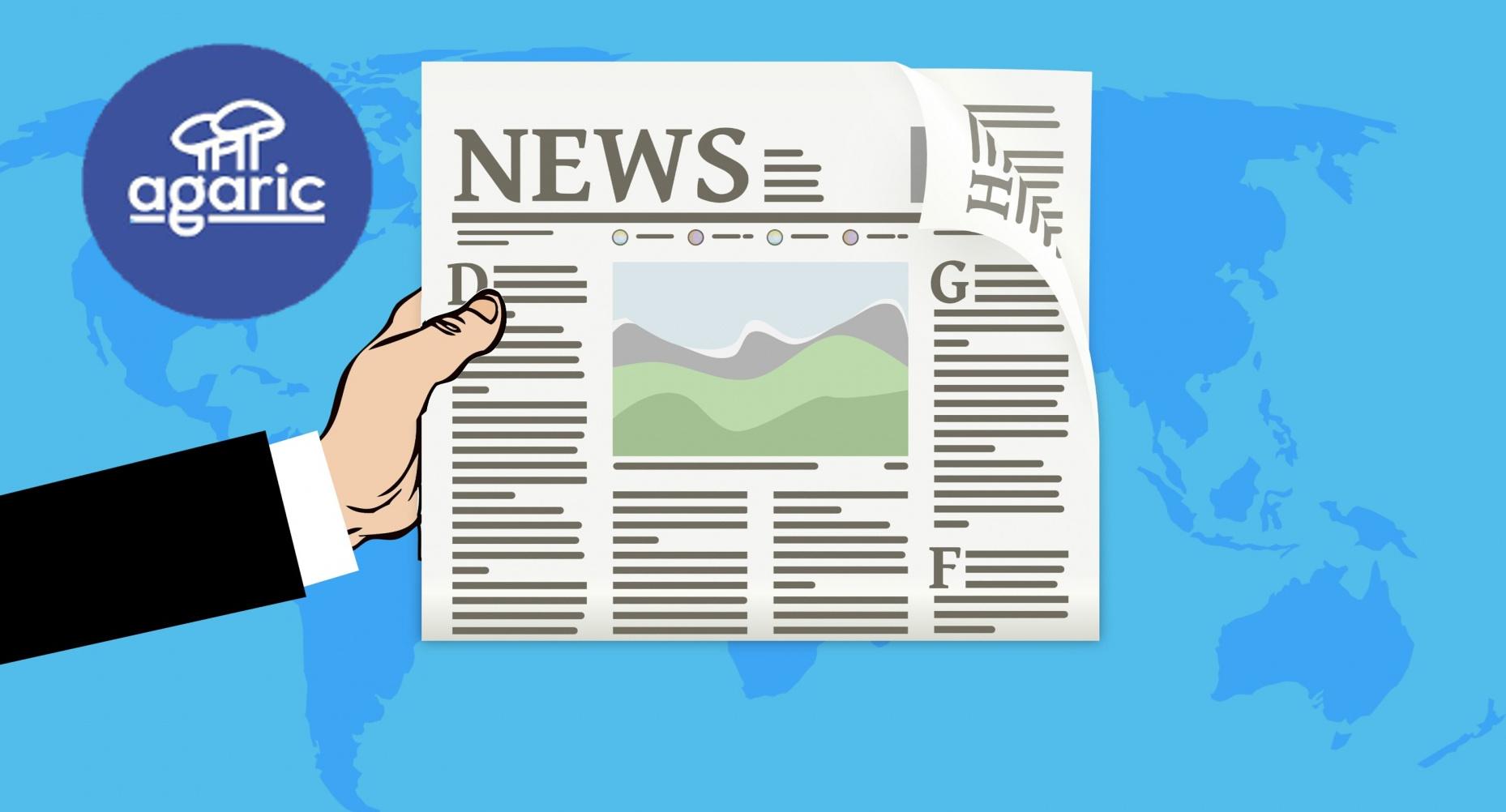
Meet the team building the open web.

Getting Started with React.js
React.js has become one of the top players in the JavaScript libraries world. Drupal has recently adopted the library to create admin interfaces. WordPress has rebuilt its WYSIWYG editor using React. This training explains the key concepts, outside the context of any particular CMS implementation. Throughout the training, a static site will be converted into a React application.
Learning objectives
- What are the benefits of using React.js?
- How much ES6 do I need to know?
- What is a component and how to create it?
- What is a state, props, and context?
- What are proptypes?
- What are lifecycle methods?
- What are hooks?
- What is JSX and what about separation of concerns?
- How to do routing?
- How to work with forms?
Prerequisites
- General knowledge of HTML, CSS, and JavaScript.
- Familiarity with ES6 syntax. The basics will be covered during the training.
- Firefox or Chrome with the React Dev Tools plugin installed.
America was founded on freedom and liberty. Eventually we found out that did not mean freedom for me, and probably not for you either. We have also discovered that when corporations sell proprietary software it prevents your access to features and compromises your privacy. So, continuing to build the future on a proprietary foundation, without total access to the inner workings {source code}... we can be held hostage at anytime to a myriad of conditions that we have no control over.
Building on proprietary solutions also means you will be excluding many of the people that need to benefit from it the most, whether intentionally or not. The people that need freedom are mostly hindered by obstacles that we can remove. Most are hindered by the lack of education about computer use and lack of money to buy the newest devices that are necessary to experience the internet. Out of 7.125 billion, 1.9 billion people have smartphones. This consumer revolution is prompting families existing on low wages to make hard choices about their lifestyles and great sacrifices to purchase an internet device such as a smartphone. How will they pay for the connectivity? Should we all be working on a free solution to this global issue?
The values identified by the Free Software Movement exemplify the values needed in a society that offers justice to all, society needs to offer access to justice for all too.
A program is free software if the program's users have the four essential freedoms:
- Freedom 0: The freedom to run the program as you wish, for any purpose.
- Freedom 1: The freedom to study how the program works, and change it so it does your computing as you wish. Access to the source code is a precondition for this.
- Freedom 2: The freedom to redistribute copies so you can help your neighbor.
- Freedom 3: The freedom to distribute copies of your modified versions to others. By doing this you can give the whole community a chance to benefit from your changes. Access to the source code is a precondition for this.
You can relate this to a person by changing a few of the words:
A person is free if they have the four essential freedoms:
- Freedom 0: The freedom to live as you wish, for any purpose.
- Freedom 1: The freedom to study what and how you wish. Access to education is a precondition for this.
- Freedom 2: The freedom to redistribute studies or ideas so you can help your neighbor.
- Freedom 3: The freedom to distribute copies of modified studies or ideas to others. By doing this you can give your whole community a chance to benefit from your experiences. Access to the education to formulate and understand ideas is a precondition for this.
So, how does this affect my daily life? After several years in the Drupal community, the free scholar in me got really tired of hearing developers that are excited about some proprietary solutions that happen to work with Drupal. Some of these solutions are being touted as the way to go in the future. I believe that our community has no shortage of genius, creative minds, and brilliant ideas. I encourage us all to think deeply about the tools we use and how they impact our personal liberties and how we can create comfortable jobs for ourselves.
For those of us that are developers, learning to explain the philosophy of free software as opposed to open source is key to autonomy, privacy, and human rights. Framing the conversation is key to the message getting to the people that need to hear it. When people are choosing convenience over privacy, it is hard to frame an argument for free software that asks us to be involved by contributing our ideas. To me, it seemed necessary to involve the people with the best future vision, that have already expounded on these theoretical scenarios around privacy concerns that have become a reality.

In May of 2015, I invited Richard M. Stallman (RMS) to the monthly Drupal meetup at MIT. I wanted him to meet some of the developers from the Boston Drupal community and experience how we work together on sharing knowledge and working on projects that are dear to our hearts, helpful to our communities, and good for society and cooperation. He gave a short lightning talk about free software and hardware followed by a Q and A. Many of us got a better understanding of what the free software movement is and how we can be a part of the educational outreach for the Free Software Foundation (FSF) to raise awareness and adoption. You can find most of the educational materials you will need on the FSF.org website.

Next, I invited RMS to NYCcamp. On Saturday July 18th, he gave the keynote speech to a large group, mostly web developers, at the United Nations. Later, he connected with the Aegir team to discuss web hosting platforms and free server tools, which led to a larger group convening at the Aegir Strategy Session with the Aegir team lead, Chris Gervais and RMS. They led an engaging round table discussion with about 30 people actively talking about the future of free tools for hosting and managing websites.

Eighteen people joined RMS for dinner and informal conversation in NYC at Congee Village. I love Drupal almost as much as I love food and freedom.
These group experiences had an affect on the community and I have since heard from several developers on how much they really enjoyed meeting RMS and knowing more about the ways free software affects our lives and our communities. One person commented "I thought RMS would be a jerk, like Linus, but he is really humble and kind when you talk to him in person."
A lot of people ask me if I work for the Free Software Foundation and my response is - no, I am a worker-owner with Agaric and we do web development using free software, but on the issues of freedom, I really work for you and me. Together, we are the mothers and fathers of our own freedoms, or not. The choice is ours to make.
What an excellent time! Your voice and thoughts are needed. Our society is only as free as the tenets on which it is built upon.
Let's free our future with free software as the
We have presented several examples as part of this migration blog post series. They started very simple and have been increasing in complexity. Until now, we have been rather optimistic. Get the sample code, install any module dependency, enable the module that defines the migration, and execute it assuming everything works on the first try. But Drupal migrations often involve a bit of trial and error. At the very least, it is an iterative process. Today we are going to talk about what happens after import and rollback operations, how to recover from a failed migration, and some tips for writing definition files.

Importing and rolling back migrations
When working on a migration project, it is common to write many migration definition files. Even if you were to have only one, it is very likely that your destination will require many field mappings. Running an import operation to get the data into Drupal is the first step. With so many moving parts, it is easy not to get the expected results on the first try. When that happens, you can run a rollback operation. This instructs the system to revert anything that was introduced when the migration was initially imported. After rolling back, you can make changes to the migration definition file and rebuild Drupal’s cache for the system to pick up your changes. Finally, you can do another import operation. Repeat this process until you get the results you expect. The following code snippet shows a basic Drupal migration workflow:
# 1) Run the migration.
$ drush migrate:import udm_subfields
# 2) Rollback migration because the expected results were not obtained.
$ drush migrate:rollback udm_subfields
# 3) Change the migration definition file.
# 4) Rebuild caches for changes to be picked up.
$ drush cache:rebuild
# 5) Run the migration again
$ drush migrate:import udm_subfieldsThe example above assumes you are using Drush to run the migration commands. Specifically, the commands provided by Migrate Run or Migrate Tools. You pick one or the other, but not both as the commands provided for two modules are the same. If you were to have both enabled, they will conflict with each other and fail.
Another thing to note is that the example uses Drush 9. There were major refactorings between versions 8 and 9 which included changes to the name of the commands. Finally, udm_subfields is the id of the migration to run. You can find the full code in this article.
Tip: You can use Drush command aliases to write shorter commands. Type drush [command-name] --help for a list of the available aliases.
Technical note: To pick up changes to the definition file, you need to rebuild Drupal’s caches. This is the procedure to follow when creating the YAML files using Migrate API core features and placing them under the migrations directory. It is also possible to define migrations as configuration entities using the Migrate Plus module. In those cases, the YAML files follow a different naming convention and are placed under the config/install directory. For picking up changes, in this case, you need to sync the YAML definition using configuration management workflows. This will be covered in a future entry.
Stopping and resetting migrations
Sometimes, you do not get the expected results due to an oversight in setting a value. On other occasions, fatal PHP errors can occur when running the migration. The Migrate API might not be able to recover from such errors. For example, using a non-existent PHP function with the callback plugin. Give it a try by modifying the example in this article. When these errors happen, the migration is left in a state where no import or rollback operations could be performed.
You can check the state of any migration by running the drush migrate:status command. Ideally, you want them in Idle state. When something fails during import or rollback, you would get the Importing or Rolling back states. To get the migration back to Idle, you stop the migration and reset its status. The following snippet shows how to do it:
# 1) Run the migration.
$ drush migrate:import udm_process_intro
# 2) Some non recoverable error occurs. Check the status of the migration.
$ drush migrate:status udm_process_intro
# 3) Stop the migration.
$ drush migrate:stop udm_process_intro
# 4) Reset the status to idle.
$ drush migrate:reset-status udm_process_intro
# 5) Rebuild caches for changes to be picked up.
$ drush cache:rebuild
# 6) Rollback migration because the expexted results were not obtained.
$ drush migrate:rollback udm_process_intro
# 7) Change the migration definition file.
# 8) Rebuild caches for changes to be picked up.
$ drush cache:rebuild
# 9) Run the migration again.
$ drush migrate:import udm_process_introTip: The errors thrown by the Migrate API might not provide enough information to determine what went wrong. An excellent way to familiarize yourselves with the possible errors is by intentionally breaking working migrations. In the example repository of this series, there are many migrations you can modify. Try anything that comes to mind: not leaving a space after a colon (:) in a key-value assignment; not using proper indentation; using wrong subfield names; using invalid values in property assignments; etc. You might be surprised by how Migrate API deals with such errors. Also, note that many other Drupal APIs are involved. For example, you might get a YAML file parse error, or an Entity API save error. When you have seen an error before, it is usually faster to identify the cause and fix it in the future.
What happens when you rollback a Drupal migration?
In an ideal scenario, when a migration is rolled back, it cleans after itself. That means, it removes any entity that was created during the import operation: nodes, taxonomy terms, files, etc. Unfortunately, that is not always the case. It is very important to understand this when planning and executing migrations. For example, you might not want to leave taxonomy terms or files that are no longer in use. Whether any dependent entity is removed or not has to do with how plugins or entities work.
For example, when using the file_import or image_import plugins provided by Migrate File, the created files and images are not removed from the system upon rollback. When using the entity_generate plugin from Migrate Plus, the created entity also remains in the system after a rollback operation.
In the next blog post, we are going to start talking about migration dependencies. What happens with dependent migrations (e.g., files and paragraphs) when the migration for host entity (e.g., node) is rolled back? In this case, the Migrate API will perform an entity delete operation on the node. When this happens, referenced files are kept in the system, but paragraphs are automatically deleted. For the curious, this behavior for paragraphs is actually determined by its module dependency: Entity Reference Revisions. We will talk more about paragraphs migrations in future blog posts.
The moral of the story is that the behavior migration system might be affected by other Drupal APIs. And in the case of rollback operations, make sure to read the documentation or test manually to find out when migrations clean after themselves and when they do not.
Note: The focus of this section was content entity migrations. The general idea can be applied to configuration entities or any custom target of the ETL process.
Re-import or update migrations
We just mentioned that Migrate API issues an entity delete action when rolling back a migration. This has another important side effect. Entity IDs (nid, uid, tid, fid, etc.) are going to change every time you rollback an import again. Depending on auto generated IDs is generally not a good idea. But keep it in mind in case your workflow might be affected. For example, if you are running migrations in a content staging environment, references to the migrated entities can break if their IDs change. Also, if you were to manually update the migrated entities to clean up edge cases, those changes would be lost if you rollback and import again. Finally, keep in mind test data might remain in the system, as described in the previous section, which could find its way to production environments.
An alternative to rolling back a migration is to not execute this operation at all. Instead, you run an import operation again using the update flag. This tells the system that in addition to migrating unprocessed items from the source, you also want to update items that were previously imported using their current values. To do this, the Migrate API relies on source identifiers and map tables. You might want to consider this option when your source changes overtime, when you have a large number of records to import, or when you want to execute the same migration many times on a schedule.
Note: On import operations, the Migrate API issues an entity save action.
Tips for writing Drupal migrations
When working on migration projects, you might end up with many migration definition files. They can set dependencies on each other. Each file might contain a significant number of field mappings. There are many things you can do to make Drupal migrations more straightforward. For example, practicing with different migration scenarios and studying working examples. As a reference to help you in the process of migrating into Drupal, consider these tips:
- Start from an existing migration. Look for an example online that does something close to what you need and modify it to your requirements.
- Pay close attention to the syntax of the YAML file. An extraneous space or wrong indentation level can break the whole migration.
- Read the documentation to know which source, process, and destination plugins are available. One might exist already that does exactly what you need.
- Make sure to read the documentation for the specific plugins you are using. Many times a plugin offer optional configurations. Understand the tools at your disposal and find creative ways to combine them.
- Look for contributed modules that might offer more plugins or upgrade paths from previous versions of Drupal. The Migrate ecosystem is vibrant, and lots of people are contributing to it.
- When writing the migration pipeline, map one field at a time. Problems are easier to isolate if there is only one thing that could break at a time.
- When mapping a field, work on one subfield at a time if possible. Some field types like images and addresses offer many subfields. Again, try to isolate errors by introducing individual changes each time.
- There is no need to do every data transformation using the Migrate API. When there are edge cases, you can manually update those after the automated migration is completed. That is, no more rollback operations. You can also clean up the source data in advance to make it easier to process in Drupal.
- Commit to your code repository any and every change that produces the right results. That way, you can go back in time and recover a partially working migration.
- Learn about debugging migrations. We will talk about this topic in a future blog post.
- Seek help from the community. Migrate maintainers and enthusiasts are very active and responsive in the #migrate channel of Drupal slack.
- If you feel stuck, take a break from the computer and come back to it later. Resting can do wonders in finding solutions to hard problems.
What did you learn in today’s blog post? Did you know what happens upon importing and rolling back a migration? Did you know that in some cases, data might remain in the system even after rollback operations? Do you have a use case for running migrations with the update flag? Do you have any other advice on writing migrations? Please share your answers in the comments. Also, I would be grateful if you shared this blog post with your colleagues.
Next: Migrating files and images into Drupal
This blog post series, cross-posted at UnderstandDrupal.com as well as here on Agaric.coop, is made possible thanks to these generous sponsors. Contact Understand Drupal if your organization would like to support this documentation project, whether it is the migration series or other topics.
As big tech continues to violate our privacy, thwart worker power, collude with militaries and deportation agencies, we need to move to ethical tech tools we can trust.
However, it can be intimidating to make the switch to new, unfamiliar tools.
Micky is leading two workshops to help people make the switch.
“How to Switch to Free Software: Email” 4:45-6:45pm Wednesday, December 4
Micky Metts of Boston’s Agaric Tech Cooperative will help us get out of the fix. The key to regaining security and control of the internet is switching to free software equivalents to proprietary/corporate software for communicating – among many uses.
This first workshop focuses on communications using email and texting software. The moderate inconvenience of switching is worth the privacy of strong encryption and the freedom of a new world of user-controlled communications and organizing. This first workshop in Sala Quetzal focuses on email and texting with encrypted software under user control. Bring your phone.
“How to Switch to Free Software: Browsers Etc” 2-4pm Thursday, December 5
A professional software developer, Micky, will focus on this second workshop, also in Sala Quetzal, on browsing, searching, and virtual meeting software. She will show how free software opens up the world of “platform co-ops” – think of Uber under drivers’ control and AirBnB under homeowners’ control.
Micky will be assisted by at-the-elbow translator/helpers. Bring your laptop and your phone.
Numquam eos enim voluptatem beatae doloribus. Ea provident dolor repellendus dolores adipisci laborum illo. Quas iusto vel architecto totam voluptas assumenda. Excepturi est inventore et architecto velit ratione.

Upgrade from Drupal 6 or 7 when it is right for you
In the era of modern Drupal, release cycles of major versions have only minor importance
A program is free software if the program's users have the four essential freedoms:
- The freedom to run the program as you wish, for any purpose (freedom 0).
- The freedom to study how the program works, and change it, so it does your computing as you wish (freedom 1).
- The freedom to redistribute copies so you can help others (freedom 2).
- The freedom to distribute copies of your modified versions to others (freedom 3).
Access to the source code is a precondition for this. To determine whether the source code is free, see what license it carries and then check the GNU project's list of licenses.

We do a few tasks that we do not have free software for. So, we use non-free programs for them. Sometimes we use specific non-free software that a client insists on including in the web site. By using non-free programs, we sacrifice some of our freedom; some activists would refuse to do that. We do not like the compromise, so we help develop free replacements for those programs. Whenever possible, we use software that reflects our values.
Operating Systems
GNU/Linux

We have chosen to use GNU/Linux as our default system for our local development. When we take on a new student, we install a GNU/Linux distribution. We always give the option of installing a different distribution, or if a student wishes to do so, they may. These are the favored GNU/Linux distributions in use by our cooperative team *members:
These are not the best versions of GNU/Linux in regards to being completely free; you should consult the list of free distributions on the Free Software Foundation website.
* Currently one team member is using the proprietary but BSD-based Mac OS X, which is compliant with the Unix 03 / POSIX standard which GNU/Linux distributions also meet.
Browsers
Firefox

As developers, we have to test client sites in all browsers, but for working and building sites, we use Mozilla Firefox. Although the source code of Firefox is free software, they include some icons, trademarks, and logos in the download that make it non-free. You can easily remove these as has been done with IceCat, the GNU version of the Firefox browser. It has great performance, developer tools, and community. The plus side of having a community around the software we use is having access to a large pool of people with experience and guidance as we learn and build together.
Tor Browser

As citizens, we are not fond of being tracked, so we use a free anonymizing web browser that does not allow tracking. It is called Tor.
Micky uses and loves the Brave browser on Android and her GNU/Linux laptop. It blocks ADs right out of the box! https://brave.com/
Without looking deeply at Qwant, it looks pretty decent - https://www.qwant.com/
We came across Qwant via https://iridiumbrowser.de/ - a more secure chromium release, but probably has some things we may not know about or want...
File Storage and Calendar
NextCloud

NextCloud is a collection of utilities suited for the De-Googlization process. It provides most of the popular tools in Google Drive. Agaric uses a hosted version of NextCloud on MayFirst.org servers that is inclusive of:
- document and file storage
- shared document editing
- multi-device synchronization
- image galleries
- calendar
- contacts
See a comparison of the features NextCloud offers vs. the proprietary options like GoogleDocs/Drive.
Finance, Accounting, and Bookkeeping
GNUcash

Accounting software that we use for our bookkeeping.
You can see a review of GNUcash vs. Quickbooks and decide if it works for you. We have found a few bookkeeping cooperatives that do accounting with GnuCash.
Real-time Chat
As a team, we rely on different tools to communicate with each other and with clients about daily activities and long term project goals. We have a distributed team at locations around the world and must maintain contact especially when pair-programming or during a migration which calls for all-hands-on-deck, as well as sharing some long informational text notes and documents that include administrative information.
Freenode

IRC - Internet Relay Chat - Realtime Text Chat: Yes, we still use IRC, and you can find us on irc.freenode.net server in the #devs-r-us channel
Our preferences here are as varied as our team members: some use irssi via a remote, always-on virtual server, many use desktop clients, such as HexChat or Konversation, and still, others prefer the web-based solution "The Lounge."
MayFirst.org hosts Agaric.com email
Email Client: Thunderbird

An email client from Mozilla, which also makes Firefox, and is available for your phone. It also has an encryption plugin called EnigMail that works well and is not super tricky to get set up.
Hosted Email: RiseUp: Encrypted services run by anonymous volunteers and you must be invited to have a membership.
MayFirst offers three web-based email solutions.
- Roundcube which has a friendly and simple web interface, making it the easier of the two programs to use.
- SquirrelMail is an option that is Javascript-free!
- Horde, on the other hand, offers more than just email - you can share calendars, to-dos and more with other members of your group.
Hosted Email
Protonmail: An email service that is hosted and encrypted.
Email Lists:
We use email list servers for mailing lists based on groups and topics. It allows group mailing to people that sign up for a specific list.
MayFirst Email Server
RiseUp Email Server
Social Media
Mastodon: Publish anything you want: links, pictures, text, video. All on a platform that is community-owned and ad-free.
Social.coop: A community similar to Twitter, the main difference is that it is owned by the members. For as little as $1 a month you can become an owner/member and take part in shaping the future of the platform. You can find and follow Agaric in social.coop, a coop-run corner of the fediverse, a cooperative and transparent approach to operating a social platform
Live Streaming
MayFirst Live Streaming: MayFirst membership includes live streaming.
Conference Calls and Online Meetings
Some Agaric team members are using Jitsi recognizing that it is a work in progress and there may be technical failures at times - such as we have also found using Google Hangouts - lag time, cut-offs, poor sound quality and issues with screen sharing. At times we have found that we need to use a proprietary solution that seems to work reliably as we continue to support development efforts and bug fixes with Jitsi. At the heart of Jitsi are Jitsi Videobridge and Jitsi Meet, which let you have conferences on the internet, while other projects in the community enable other features such as audio, dial-in, recording, and simulcasting.
You can self-host an instance of Jitsi or choose a hosted version. You can use http://meet.jit.si or an instance is also available for public use at https://meet.mayfirst.org We do encourage you to become a MayFirst member and have access to all of the free software tools they offer. The Jitsi project needs volunteers to use and test Jitsi so it can get better swiftly!
Currently, Agaric was using and paying for, the proprietary Zoom audio/video conference call service and software. Since October we have been using BigBlueButton a free software alternative. BBB has been working well for us and we have worked it into being our go-to solution for protecting our privacy.
BigBlueButton
BigBlueButton.org: Agaric uses BigBlueButton as our video-chat meeting platform. We also offer free chatroom hosting for those that cannot afford to pay for this service.
Phone Calls and Text Messages
Signal: Agaric uses Signal to encrypt SMS text messages and phone calls. Encrypted phone and instant messaging found to be secure and recommended by Edward Snowden as the only truly encrypted messaging app that is not able to be decrypted by anyone. Note that security is an arms race and this could become false at any time.
Collaborative Note Taking
Etherpad: When hosting an online meeting we usually open a shared note pad so that everyone may contribute to getting the important bits logged. Etherpad text is synchronized as you type so that everyone viewing the page sees the same text. This allows you to collaborate on documents with large or small teams seamlessly! We use the hosted version, but you are welcome to host it yourself. We have tried a few online pads and settled on Etherpad as the most reliable.
Collaborative Ongoing Discussion
With some collaborators, particularly people involved with the Drutopia initiative, we use Mattermost rather than IRC. Mattermost can be more useful for ongoing discussions; it is similar to Slack and offers a threaded conversation. The community version is free software.
Notes and ToDo Lists
TomBoy A tiny app that lets you take notes while it conveniently makes hyperlinks out of titles and allows synchronization over SSH and more.
Password Management
KeePass A password management system that takes most of the worry, distraction and thinking out of storing and retrieving your login information for multiple projects and sites.
Text Document Editing, Spreadsheets, and Presentations
Libre Office: A suite of office tools similar to Microsoft Office, Documents, Spreadsheets, Slides. We use LibreOffice tools that come as core software in the distributions of GNU/Linux we are using. You may have heard of OpenOffice; it is now called LibreOffice. It consists of basic publishing and calculating software for doing office tasks. These are the ones we use most often:
1. LibreOffice Calc - Similar features and functions of a calculating software to make spreadsheets, such as MicroSoft Excel
2. LibreOffice Writer - Similar features and functions of a word processor such as MicroSoft Word
3. LibreOffice Impress - We use this tool to build slide decks and presentations using text/graphics and videos; it is similar to Microsoft PowerPoint in features.
Project Management and Issue Tracking
*GitLab: This tool is a web-based and self-hosted Git-repository manager with a wiki and issue-tracking features. We also use Gitlab for cooperative development on our projects.
*Although GitLab isn't fully free software, it does offer a self-hosted version that is. The Enterprise hosted version has extra features and is proprietary.
Redmine: A free program that you can run locally or on your own server for use as a project management and issue tracking tool. Before finding GitLab, we used a self-hosted instance of Redmine which is free software.
Decision Making and Voting
Loomio: A hosted service available at http://loomio.org
Loomio offers distributed decision-making system where you can make groups that can have discussions and make decisions without an in-person meeting. Decide yes or no, or that you need more information.
Note that Loomio also has built a great cooperative resource on at their other URL - http://loomio.coop
Customer Relationship Management
CiviCRM: Agaric is working with the developers at MyDropWizard to take a look at CiviCRM with Drupal 8.
CiviCRM is a free software to manage client relationships and memberships. We have not deployed it yet.
Resources and Free Software Directories
- Free Software Directory
- Awesome-list of self-hosted applications
- You can search for Free software alternatives. - be sure to search for Free/Open Source, not the free trial software, and LOOK at the license.
You can contribute to groups working towards solutions, there are many roles, and you do not have to be a developer. As an example, *IndieWeb and Jitsi are projects that we make time to support with development, testing, outreach, and feedback.
*With IndieWeb, you can take control of your articles and status messages can go to all services, not just one, allowing you to engage with everyone. Even replies and likes on other services can come back to your site, so they’re all in one place.
Framasoft: A large collection of free software tools where we use the calendar and polling software most often. We are experimenting with several other FramaSoft tools and may adopt them in the future.
If this has been a helpful read, please pass it on and let us know in the comments how it helped you. A follow-up post will list the tools we use for development purposes. Please be sure to mention any free software you have found and are using now.
I will leave you with an excellent TEDx talk where Richard Stallman explains Free Software:
Sign up to be notified when Agaric gives a migration training:
Servicios federados / P2P / descentralizados.
https://redecentralize.org
https://prism-break.org/en/all/
https://secushare.org/comparison
Proyectos:
https://p2pfoundation.net/ https://gnunet.org/en/
https://tox.chat/about.html
https://net2o.de
https://ipfs.io https://github.com/cjdelisle/cjdns
When you think of training, perhaps you remember an event that you were sent to where you had to learn something boring for your job. The word training does not usually make people smile and jump for joy, that is unless you are talking about Drupal training. These gatherings spread the Drupal knowledge and increase diversity in the community of Drupal developers.
Join us for the next Drupal Global Training Day with our online full day session on getting started with Drupal on November 29th 2017. It will be held online from 9 AM to 4 PM EST.
A link to the live workshop on Zoom will be provided when you sign up!
The Drupal Association coordinates four dates each year as Global Training Days, designed to offer free and low-cost training events to new-to-Drupal developers and to create more Drupal talent around the world. The community is growing exponentially as more people learn how fun and easy it is to get involved and be productive. Volunteer trainers host these global events in person and online. In 2016, a Global Training Days Working Group was established to run this program. There is a Global Training Days group on Drupal.org that lists trainings around the world.
Mauricio Dinarte will be leading the training online on November 29th. As an introduction to Drupal a person needs to learn certain things that are specific to Drupal and some are not that intuitive. It is important to cover the very basics in terminology and process. An introductory class can include many things, but this list is what Mauricio covers during the day long event:
- Drupal installation requirements and process
- Nodes
- Content types
- Fields
- Blocks
- Theme regions
- Views
- User and permissions
- Menus
- Taxonomy
The outcome of the day of training is that everyone walks away understanding the main moving parts of Drupal and a bit about what they do. Of course you will not become a developer overnight, but you will have enough information to build a simple site and then explore more of Drupal on your own.
You can follow up with many online tutorials and by joining the Drupal group in your area and attending the meetings. At meetings you will connect with other people at different levels of skill and you will be helped and helpful at the same time! If there is no Drupal group in your area, I suggest you start one. It can start as easily as posting online that you will be at a specific location doing Drupal at a certain time of day - you will be surprised at who may show up. If no one shows up the first time, try again or try a different location. One of the best things about Drupal is the community and how large and connected we are. If you start a group, people will usually help it grow.
Bringing new people to Drupal is not only good for increasing the size of the member base, it also brings diversity and reaches people that may never have had an opportunity or access to a free training. Drupal trainings are usually held at a university in or near a city which attracts people from different backgrounds and cultures. We can also reach people that are not in a city or near a school by sharing online.
Have you ever thought about volunteering at a Global Training Days event? We have a blog about organizing your own Global Training Days workshop that can get you started. This is a great way to get to know the people in the community better, up your skills and perhaps share something you have learned. I learned much about programming by assisting developers at sprints and trainings. This is where the real fun begins. Learning does not have to be stressful, and in the Drupal community people are friendly and welcoming. No question is stupid and even those with no experience have valuable skills. Developers love people without prior experience because they make the perfect testing candidates for UI and UX. The down side is that Drupal is so captivating that you will probably not remain a newbie for very long, so enjoy it while it lasts.
One of the true highlights of Global Training Days is seeing all the people around the world gain valuable skills and share knowledge. We hope you can join us.
IV. Movements and Networks
Free Software Movement

Free/Libre software is software that asserts the 4 fundamental software freedoms to every user. From Drupal modules to entire platforms, everything we build is Free Software because we believe that individuals and communities alike should have as much ownership as possible over the software they use. We even advise our clients in our blog on how to perform daily business operations using Free Software. Agaric's are members and supporters of the Free Software Foundation.
Design Justice Network

We design sites according to the principles of Design Justice. This means that the user experience of marginalized individuals is central to our design considerations. As a part of this network we share ideas and learn techniques to provide equitable online experiences for all. You may not know what it is like to be left out, until you are.
MayFirst Movement Technology
MayFirst Movement Technology (MFMT) is a cooperative, of movement organizations and activists, that provides web hosting, email services and other free software tools to its members. MFMT has a bold and progressive mission and agrees not turn over your data to third parties under any circumstances.
As members of MFMT, we support the organization by raising awareness on ethical hosting and free software community standards. We encourage people and organizations to join and host their websites through MFMT and gain access to a suite of free software tools and services. Micky is an active board member, involved in discussions of governance as well as the free software tools and platforms that MayFirst offers. Your web hosting does matter, and so does your voice!
Platform Cooperativism

The Platform Cooperativism Movement was started at the New School in NYC by Trebor Scholz and Nathan Schneider a professor at the University of Colorado. While Free Software spreads ownership of a software via licensing, Platform Cooperativism does so by founding platforms built by communities with democratic decision-making and shared ownership.
Micky has spoken at many Platform Cooperative events on Free Software, digital privacy and security, and the importance of collaborative development. She is also the author of a chapter in the book Ours to Hack and to Own: The Rise of Platform Cooperativism, A New Vision for the Future of Work and a Fairer Internet.
US Federation of Worker-Owned Cooperatives

USFWC is a non-profit 501c3 that is active in supporting worker-owned cooperatives while building the solidarity economy together. Currently we are building deeper ties with other tech coops within the USFWC to help advance economic justice in the tech industry as we build technology and support social justice movements, enhance trust and work with them. The federation works closely with DAWI - Democracy at Work Institute to educate and support members having a voice in their workplace.
U.S. Solidarity Economy Network

The USSEN is dedicated to exploring equitable and ethical economies that benefit community members and can interact on a larger scale to define methods and processes for promoting the growth and sustainability of each community as it relates to the world around it. As an organization, we are a member of the North American chapter of RIPESS which is part of an international organization that is an umbrella for groups like USSEN, worldwide. We also create Resist and Build workshops that support the Solidarity movement.
Tech Coop Network

The Tech Coop Network was formed at a USFWC conference in Los Angeles in 2017 by members of several worker-owned tech and web development cooperatives. We are currently discussing bylaws and governance to prepare for inviting other cooperatives to join us. We meet monthly and are establishing our communications infrastructure.
International Workers of the World

Some Agaric members have joined the Boston Chapter of the IWW. This chapter has a horrible and ignoble past that the current members are determined to overcome. Current members are committed to rebuilding this branch to exemplify the very causes it was based upon before it was destroyed from within. We stand with marginalized people and communities. We represent the disenfranchised worker and support non-conforming individuals rights. An injury to one is an injury to all!
The Digital Fourth

As members of the Boston Chapter, we stay informed on new laws and changes to current laws that could effect our online presence as well as our real life freedoms. Agaric enjoys keeping up with the digital legal strategies and will voice our opinion on whether digital citizens will be affected negatively or positively by pending legislation in our state and sometimes nationally. Artificial intelligence and machine learning are two complex areas of technology and they need to be addressed by groups like us, with diverse knowledge. Surveillance by the Government is also a priority and we publish our findings and recommendations. We cannot change the things that we do not know about. D4th is a part of the nationwide coalition Restore The Fourth.
Science for the People

Scientists and citizens convene to discuss and create ways for the general population to get involved in all things scientific. We believe that you should not need a degree to have access to people in fields of scientific study. We work to remove barriers and make connections between scientists and average citizens people with good ideas and questions that could benefit scientific understanding. Agaric is very interested in connecting people, projects and promoting discussions in this group. Science for the People has online meetings and is open to all.
"Wirth Co-op won't reopen", a tiny heading on the front page of North News announced. The story ran inside on page four.
The grocery store, right in my neighborhood, set out to build community wealth and provide healthy food in north Minneapolis. The loss of its promise is crushing.
Wirth Grocery's failure to act as a cooperative—with its own existence at stake—is even more upsetting. Cooperatives are one of the few spaces where people have a chance to take collective control of something that matters to them.
One epic month of blog post tutorials about migrating into Drupal 8 and 9 by Mauricio who also is the driving force behind Agaric's migration trainings and Agaric's upgrade services.
One man. One month. Many migrations.
We had a fantastic and fun 2019! Agaric team members attended many conferences and hosted multiple trainings while building sites with some amazing clients. We also took on maintenance for a few sites, helping them gain more audience and stability as well as ease of use for visitors and administrators.
Platform Cooperativism Conference
Wow - more than a month has gone by since the New year began! Heads down, we now surface for some news an announcements on the who, what, where and when of the past year and the beginning of 2020. At the end of last year, Agaric members hosted a Town Hall style session at a conference titled: "Who Owns the World?" This was the yearly Platform Cooperativism event convened by Trebor Scholz at the New School in NYC. It was an incredible way to end the year. We met so many people involved in so many worthy projects that it was a bit overwhelming!

Attending the 2019 Platformcoop event in NYC was an incredible way to end 2019. We met so many people involved in so many worthy projects that it was a bit overwhelming! The biggest take-aways were learning about how many successful bicycle delivery platform cooperatives there are in many countries. We also found out that worker-owned cooperatives are sparse in places like Indonesia and Japan even though they have a healthy cooperative ecosystem. Cooperative governance is still a wide-open discussion going on amongst many cooperatives. It was nice to have some discussions with other cooperatives on how they go about creating their governance. We have been in touch with several people that we met at the conference this year.
Since the Platformcoop event in NYC, Agaric has been busy working hard on building two platforms. The first one to mention is the Find It platform, a robust opportunity locator, a participatory searchable directory of events, programs and organizations.
Find It Platform
Last year we connected with the City of Cambridge, Massachusetts as they were met with the challenge of getting their residents more engaged in community activities and increasing usage of public spaces. We worked closely with the Kids Council in Cambridge to coordinate an effort between government, the residents of the city, and local coding groups to design a platform that would provide residents the means to more easily navigate a directory of public events based on their age and interests.
The resulting platform is named Find It, and it was developed by our team of worker-owners at Agaric.
To give you an idea of the value the platform can bring to the residents of a city, here is a PSA on Find It to the residents of Cambridge.
After seeing how successful Find It has been in enriching the communities in Cambridge, we are eager to invite other cities to join in the collaboration. FindIT is built on Drupal, free and open-source software that ensures adopters a powerful and affordable tool that can be altered to suit the needs of the city it serves. Better yet, surveys and interview questions for city residents are already prepared from the Find It Cambridge collaboration. As more cities get involved in the Find It project, we will be able to increase its capabilities all the while decreasing the cost of the service.
Drutopia
A budding platform cooperative that Agaric has collaboratively built with other Drupal shops and freelance contributors is, Drutopia, an ecosystem of Drupal distributions, built and managed as a software cooperative. Soon Agaric will be offering what we call a Libre Software as a Service program, which will allow people to host their site through us, similar to online website builders but governed democratically and with the power of Drupal behind it all. You can find more information on the Drutopia website: https://drutopia.org

Contributing Back to Drupal
Working with Drupal, Agaric has led some data migration training workshops at some Drupal camps. We hosted a migration training in San Francisco at BADcamp - Bay Area Drupal Camp as well as a session on growing the community and scaling democracy. The team hosted a full day, sold-out training for 45 people at DrupalCon Seattle in 2019. We are engaged to host more trainings at the upcoming 2020 DrupalCon in Minnesota in May of 2020. We recently hosted a migration training at DrupalCamp New Jersey at Princeton and these are our upcoming scheduled data migration trainings:
- March 18 MidCamp - Drupal 8 Upgrade All Day Training
- May 18 DrupalCon Minneapolis - Drupal 8 Content Migrations All Day Training
- May 19 DrupalCon Minneapolis - Upgrading to Drupal 8 Using the Migrate API All Day Training
You can see the list and join us - https://agaric.coop/blog/make-2020-year-you-begin-upgrade-drupal-8-upcoming-trainings-and-resources
We have also been busy working on contributed modules. Currently, Gnuget is working on making https://www.drupal.org/project/filefield_sources stable and at the same time compatible with Drupal 9.
Forging Connections in Mexico

Some Agarics are also headed back to San Miguel de Allende, Mexico to continue a series of lectures and workshops on security, privacy, surveillance, and Platform Cooperativism at the local Biblioteque, in mid-February. The lecture is titled: Platform Cooperativism, Surveillance Capitalism, Predictive Analysis and You.
In 2018, we made our first visit to the Center for Global Justice in San Miguel de Allende when Micky was asked to speak at an Encuentro (gathering) in Mexico City to celebrate the victory of Mexico's electrical workers' union (SME). SME workers were fired en masse in 2009 but stayed united and fought back. They now provide electricity to central Mexico as a co-op under democratic workers' control! This visit activated an idea to organize trips to Mexico to host workshops and lectures specifically on software freedom and security with an introduction to protecting your privacy online. The next Workshop/Lecture tour will happen February 2020 - We hosted some workshops earlier this year and you can read about them here: https://agaric.coop/blog/micky-lead-free-software-trainings-mexico

2019 was an exciting year for Agaric as we traveled to teach and to learn. Micky presented as a Keynote speaker at two major events for developers in New England, NerdSummit and the Free Software Foundation's yearly event, LibrePlanet. She will be back again this year with a presentation on Surveillance Capitalism, Predictive Analysis and YOU. View the LibrePlanet Keynote here:
MayFirst Movement Technology
As active members of MayFirst Movement Technology, an organization providing web hosting, email services, and other free software tools to its members. MFMT also advocates for an open web and ethical technology. This year, Micky was elected by the members to serve on the board of the new cooperative formed by the members. Together, we are building online and offline workshops and discussions on freedom and raising awareness on the need to have a web host that is ethical and that you truly trust to protect you and your data.
Agaric continues to host a weekly online gathering where everyone shares methods and processes and ideas for sharing our knowledge and learning from others. You can join us any Wednesday for Show and Tell - lurk, engage or contribute! We also have some new Agaric initiatives and we have launched some new client websites as well as redesigns of other sites. We continue to reach out to share the knowledge we have gained while including as many people as we can in the process of learning to use free software to make a better planet and to make a better life for all!
Pagination
- Previous page
- Page 11

